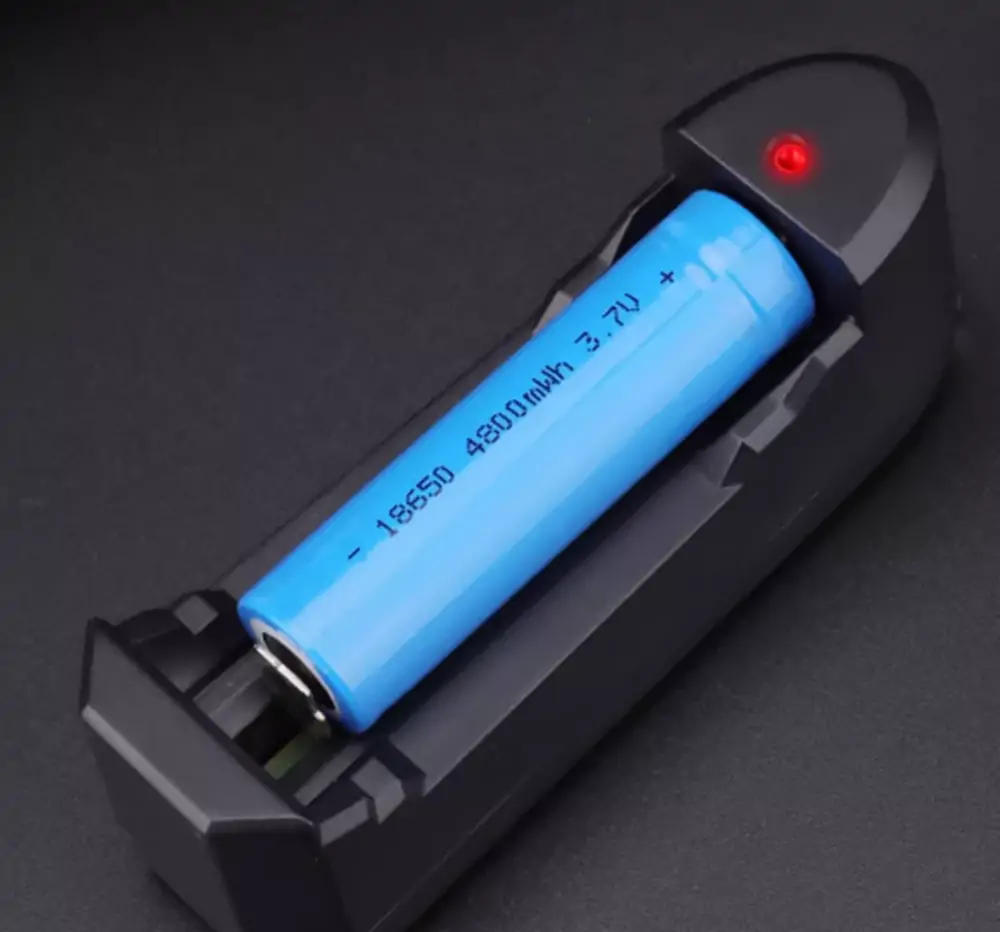18650 batteries are widely used in flashlights, vape devices, and power tools. While they are reliable and powerful, proper charging is essential for safety and longevity. One of the most common questions is:

The answer depends on several factors, including battery capacity, charger output, and battery condition. This guide will break down the charging process, explain how to calculate charging time, and provide troubleshooting tips.
18650 battery charge in four stages:
Stage 1: Trickle Charging (Low-Voltage Pre-Charging)
If the battery is deeply discharged (below 2.5V–3.0V), the charger applies a low current to slowly raise the voltage.
Why it matters: Direct high-current charging at low voltage can damage the battery.
Stage 2: Constant Current (CC) Charging
The charger supplies a steady current, gradually increasing the battery’s voltage.
Duration: This phase takes up most of the total charging time.
Stage 3: Constant Voltage (CV) Charging
When the voltage nears 4.2V, the charger switches to constant voltage mode, reducing the current gradually.
Purpose: This ensures the battery is topped off safely without overcharging.
Stage 4: Charging Termination
Charging stops when the current drops below a certain level (typically<10% of the initial current).
Some chargers have a timer or voltage cutoff as an extra safety feature.
1. Battery Capacity (mAh)
A higher-capacity battery (e.g., 3000mAh) takes longer to charge than a lower-capacity one (e.g., 2000mAh).
2. Charger Output Current (A)
A 2A charger will charge an 18650 battery faster than a 1A charger.
Tip: Using a charger with too low an output can significantly extend charging time.
3. Initial Battery Voltage
If the battery is deeply discharged (<3.0V), it will take longer due to the trickle charge phase.
4. Charging Efficiency
Not all energy from the charger is stored in the battery; some is lost as heat. Efficiency is typically 80–90%.
5. Temperature
Extreme heat or cold can slow down charging and damage the battery. Ideal charging conditions: cool, dry place.
6. Battery Condition
A new battery charges faster than an aging or degraded one.
You can estimate the charging time using this formula:
Charging Time=Battery Capacity (mAh)Charger Output (mA)×Efficiency Factor\text{Charging Time} = \frac{\text{Battery Capacity (mAh)}}{\text{Charger Output (mA)}} \times \text{Efficiency Factor}Charging Time=Charger Output (mA)Battery Capacity (mAh)×Efficiency Factor
Where:
Battery Capacity is in mAh
Charger Output is in mA (e.g., 1A = 1000mA)
Efficiency Factor (typically 1.2 to 1.3) accounts for energy loss
Example Calculation
Battery Capacity: 3000mAh
Charger Output: 1000mA (1A)
Efficiency Factor: 1.3
If you use a 2A charger, the time is cut roughly in half:
30002000×1.3=1.95 hours(≈2 hours)\frac{3000}{2000} \times 1.3 = 1.95 \text{ hours} (\approx 2 \text{ hours})20003000×1.3=1.95 hours(≈2 hours)
To estimate how long a fully charged battery will last before needing a recharge, use this formula:
Discharge Time=Battery Capacity (mAh)Device Power Draw (mA) ext{Discharge Time} = rac{ ext{Battery Capacity (mAh)}}{ ext{Device Power Draw (mA)}}Discharge Time=Device Power Draw (mA)Battery Capacity (mAh)
Example Calculation
Battery Capacity: 3000mAh
Device Draw: 500mA
Discharge Time=3000500=6 hours ext{Discharge Time} = rac{3000}{500} = 6 ext{ hours}Discharge Time=5003000=6 hours
Note: Actual runtime may be slightly lower due to efficiency losses and battery aging.
1. Output Current
A higher output charger (e.g., 2A) charges batteries faster than a low-output charger (e.g., 0.5A).
2. Smart Chargers
These automatically adjust the voltage and current for safe and efficient charging.
3. Compatibility
Using an incompatible charger can slow down charging, reduce battery life, or cause overheating.
Want to charge your battery faster? Try these tips:
✅ Use a High-Quality Charger – Choose one with a higher output (within safe limits).
✅ Avoid Deep Discharges – Recharge before the battery is fully drained.
✅ Charge in a Cool, Ventilated Space – Prevents overheating.
✅ Keep Battery Contacts Clean – Dirty or corroded contacts can slow down charging.
Problem 1: Battery Won’t Charge
Possible Causes: Dead battery, faulty charger, dirty contacts.
Solution: Use a multimeter to check voltage. Try a different charger. Clean battery contacts.
Problem 2: Battery Overheats While Charging
Possible Causes: High charging current, poor ventilation.
Solution: Use a lower-output charger. Charge in a well-ventilated area.
Problem 3: Incomplete Charging
Possible Causes: Aging battery or charger malfunction.
Solution: Replace the battery if it's old. Test the charger with another battery.
Problem 4: Slow Charging
Possible Causes: Low-output charger, degraded battery.
Solution: Upgrade to a higher-output charger. Replace the battery if needed.
Charging an 18650 battery efficiently requires understanding the charging process and knowing how to calculate the time based on battery capacity and charger output. Using a high-quality charger, maintaining optimal charging conditions, and troubleshooting common issues can extend battery life and improve performance.
By following these best practices, you can maximize battery lifespan, save time, and ensure safety.
Well-maintained batteries = longer runtimes and better device performance!
Next:What Are The Best Batteries For Cold Weather Fishing?
Previous:900pcs 206Ah, 230Ah and 280Ah LiFePO4 Battery Cells to Thailand
Contact Person: Miss. Elsa Liu
| WhatsApp : | +8617763274209 |
|---|---|
| Skype : | +8617763274209 |
| WeChat : | 17763274209 |
| Email : | Elsa@lifepo4-battery.com |